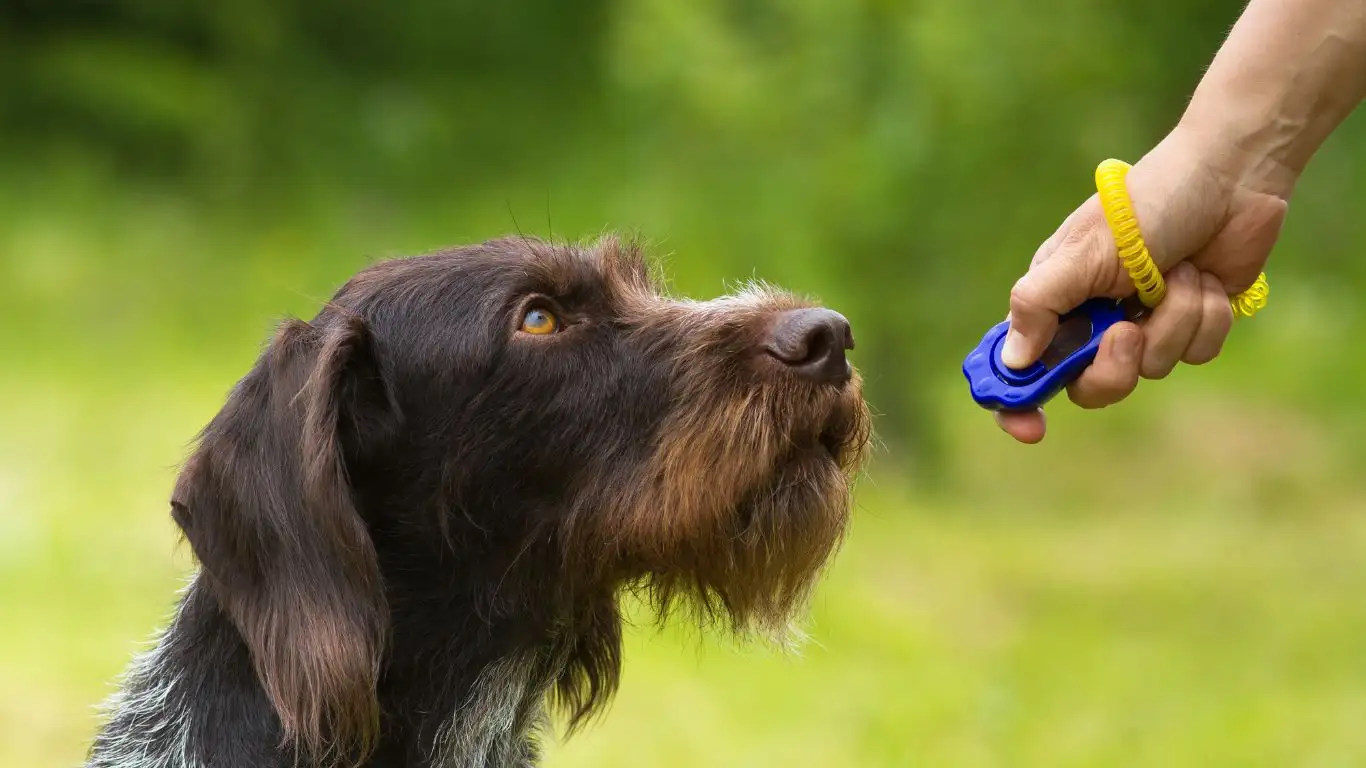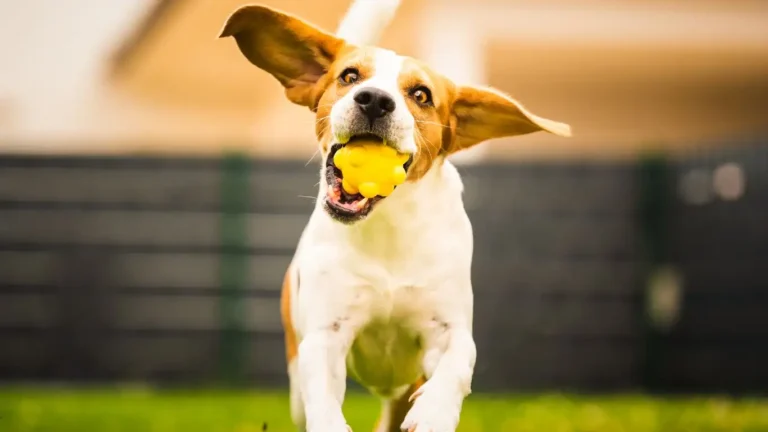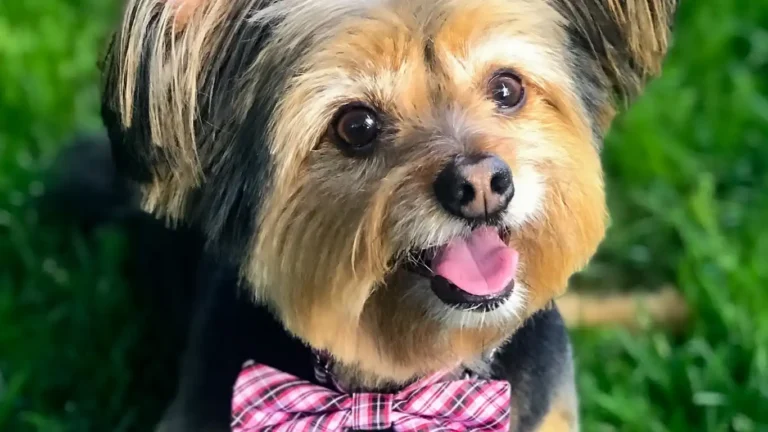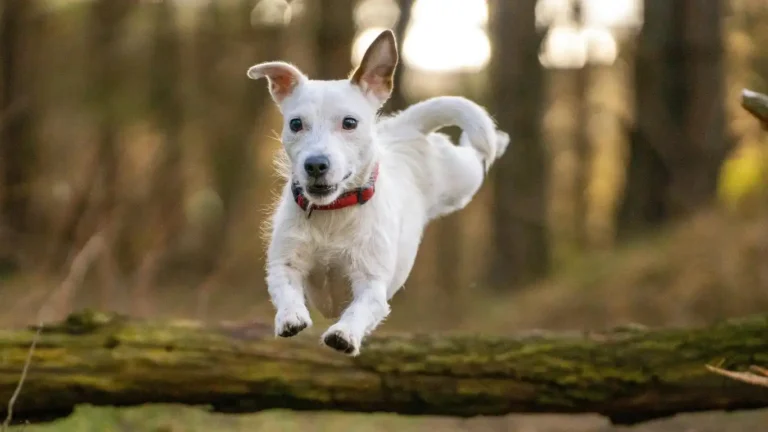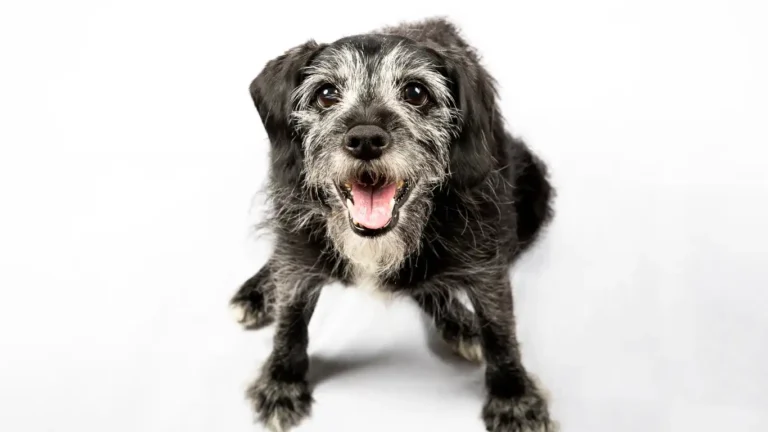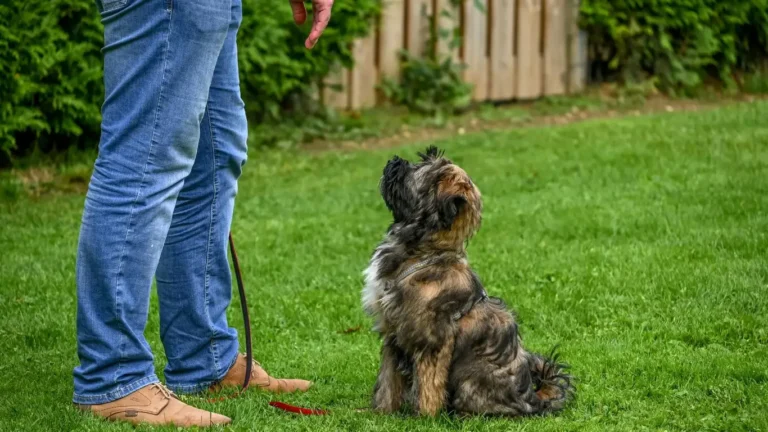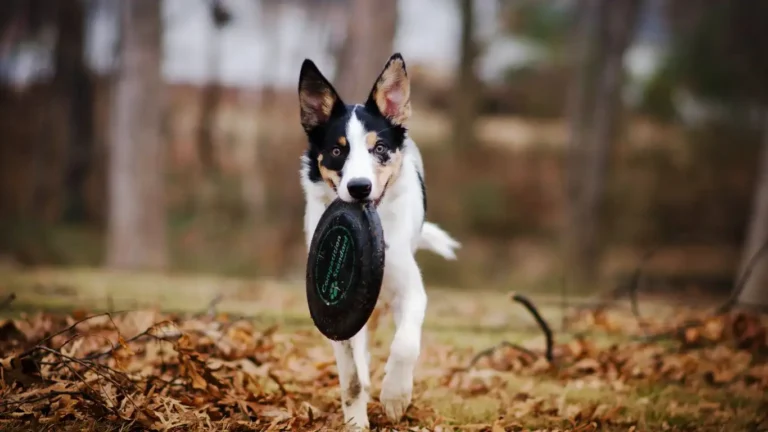How to Train a Dog to Tolerate Vacuum Cleaners with Confidence
If you’re a dog owner, you know that vacuum cleaners can often be a source of anxiety for your furry friend. Whether your dog barks uncontrollably, hides under furniture, or seems genuinely scared of the sound and movement, it can make cleaning time stressful for both you and your dog. But the good news is that with patience, consistency, and the right training techniques, you can teach your dog how to tolerate vacuum cleaners without all the fear and anxiety. This process takes time, but it’s entirely doable—and trust me, I’ve helped countless dogs become comfortable with vacuums as part of my work as a Canine-Assisted Therapy Trainer. In this article, we’ll dive into the steps and strategies to train your dog to tolerate vacuum cleaners, making your household chores a lot smoother for everyone involved!
Understanding Why Dogs Fear Vacuum Cleaners

Before diving into training, it’s important to understand why your dog might be scared of vacuum cleaners in the first place. Many dogs have an instinctual fear of loud noises, and the vacuum cleaner is no exception. The loud sound, the way it moves unpredictably, and its large size can all be overwhelming for your dog. For some dogs, the vacuum cleaner might seem like a threatening object that suddenly takes up space and disrupts their environment. This type of fear is often triggered by the unfamiliar sounds and movements associated with it, and over time, this fear can become more ingrained if not addressed. But don’t worry, the good news is that with the right approach, you can help your dog become more comfortable with the vacuum and eliminate that fear!
Start with Desensitization
The first step in teaching your dog how to tolerate vacuum cleaners is desensitization. Desensitization is a training technique that involves gradually exposing your dog to the vacuum cleaner in a controlled and calm manner, allowing them to get used to it without feeling overwhelmed. The key to success with desensitization is taking it slow. If you go too fast, you risk overwhelming your dog and reinforcing their fear.
Here’s a simple way to start the desensitization process:
- Start with the vacuum off: Begin by simply bringing the vacuum cleaner into the room when your dog is calm. Don’t turn it on yet. Just allow your dog to observe the vacuum from a distance. At this stage, you’re just getting them used to its presence. Don’t force them to approach it; let them take their time and come closer on their own terms.
- Reward calm behavior: Every time your dog stays calm or shows curiosity without reacting in fear, reward them with praise or a treat. Positive reinforcement helps your dog associate the vacuum with good things.
- Gradually move closer: Once your dog seems more comfortable with the vacuum being in the room, slowly begin to move it closer to them. Again, make sure to do this at a pace that doesn’t overwhelm them.
This step is all about baby steps! The goal is to desensitize your dog to the vacuum’s presence before introducing any noise or movement.
The Power of Counter-Conditioning
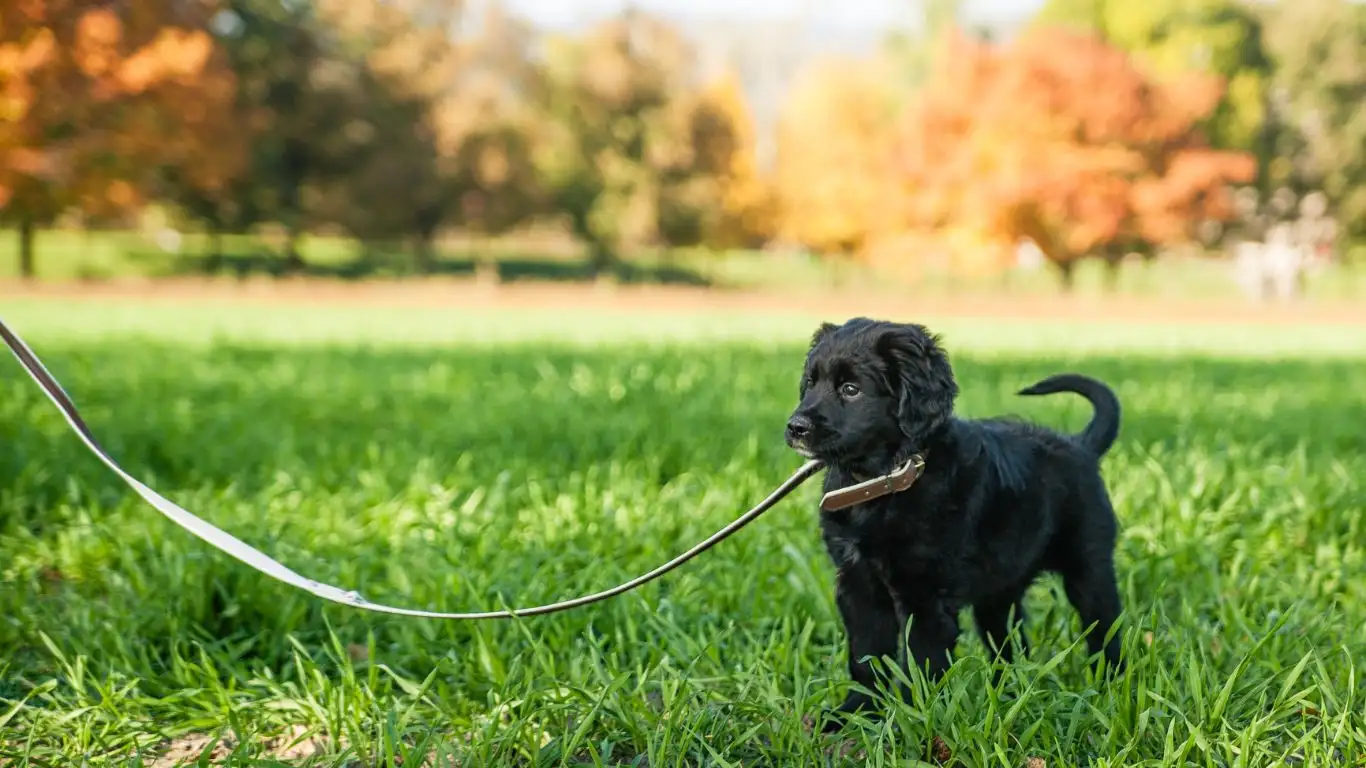
Counter-conditioning is another technique that can help your dog learn to associate the vacuum cleaner with something positive. Essentially, counter-conditioning means changing your dog’s emotional response to the vacuum from negative to positive. Instead of reacting with fear or anxiety when they see the vacuum, your dog will begin to associate the vacuum with treats, praise, and fun!
Here’s how to get started with counter-conditioning:
- Introduce the vacuum while it’s off: With the vacuum in the room and turned off, give your dog a treat every time they look at it without reacting. The key here is to reward them for showing calm behavior, so you’re teaching them that the vacuum is something that brings rewards.
- Gradually increase the challenge: After your dog is comfortable with the vacuum being in the room, you can start turning it on for short periods of time. Keep the vacuum in an idle state for a few seconds, then reward your dog if they stay calm. If your dog shows signs of fear, turn the vacuum off and give them a break. The goal is to associate the vacuum with positive experiences, even when it’s on.
- Incorporate vacuum-related activities: Once your dog is getting used to the sound of the vacuum, you can start incorporating it into fun games. Try using the vacuum as part of a “find the treat” game. Place treats on the floor near the vacuum while it’s off, and let your dog search for them. This helps your dog focus on the positive aspects of the vacuum, turning it into a part of their normal routine.
Through consistent repetition, your dog will start to associate the vacuum cleaner with positive rewards rather than fear. It may take some time, but with patience and consistency, you’ll see progress!
Keeping Training Sessions Short and Sweet
When it comes to training, especially with desensitization and counter-conditioning, it’s important to keep training sessions short and enjoyable for your dog. Dogs have a limited attention span, so long, drawn-out sessions can lead to frustration or confusion. A general rule of thumb is to keep training sessions around 5-10 minutes at a time, especially when introducing new stimuli like the vacuum cleaner.
Short training sessions are much more effective because they prevent your dog from becoming overwhelmed or stressed. You can always have multiple short sessions throughout the day, allowing your dog to process and absorb the training in small, digestible bits.
By keeping training fun and upbeat, you’re more likely to build a positive association with the vacuum cleaner, making it easier for your dog to eventually tolerate—and even ignore—it during cleaning sessions!
Increase the Intensity Gradually
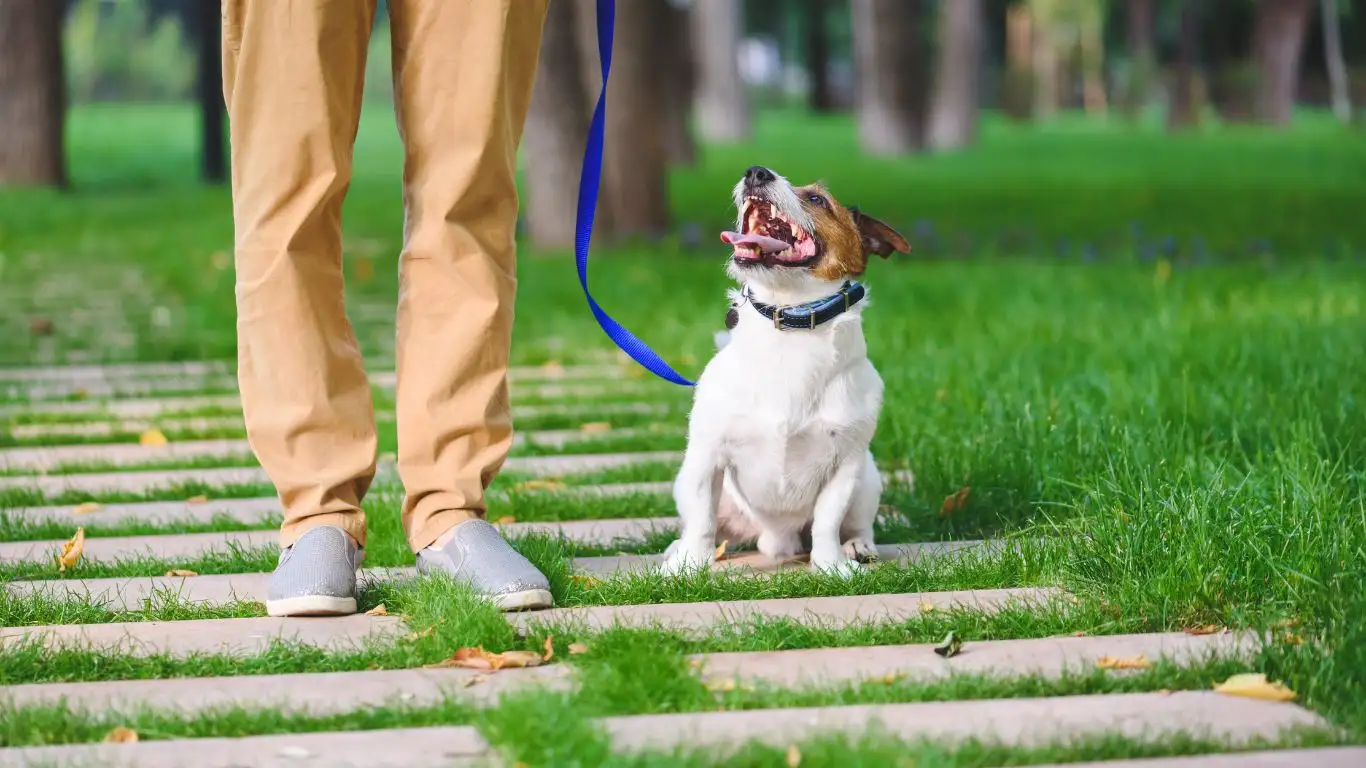
Now that your dog is becoming accustomed to the vacuum cleaner’s presence and the initial sounds, it’s time to slowly increase the intensity of the training. If you’ve been following the desensitization process, your dog should be comfortable with the vacuum in the room and may even have started ignoring it. But we want to keep progressing so that your dog can tolerate the vacuum cleaner in a variety of scenarios—like when it’s turned on, moving, or being used in different parts of the house.
It’s important to gradually increase the level of challenge so your dog doesn’t get overwhelmed. Think of it like building a muscle—small, consistent steps lead to long-term success. Here are some strategies to increase the intensity of the training:
- Increase the duration of vacuum usage: Start by vacuuming for short bursts. Turn the vacuum on for just a few seconds and reward calm behavior. Slowly increase the time you leave the vacuum on. If your dog starts to react anxiously, turn the vacuum off, and let them calm down before trying again.
- Move the vacuum slowly: The vacuum moving around the room can be just as daunting as the sound itself. To help your dog get used to the movement, try pushing the vacuum slowly across the floor at first. If your dog reacts, take it slow and go back to the earlier step of just having the vacuum stationary until they become comfortable with its movement.
- Move the vacuum in different areas: Once your dog is okay with the vacuum being moved across the room, it’s time to try different locations. This helps them generalize the idea that the vacuum is not a scary object, no matter where it is in the house.
By taking your time and carefully increasing the intensity of your training, your dog will become more comfortable with each new challenge. The goal is to make vacuuming a completely normal part of your dog’s routine so they won’t feel the need to hide or react negatively when they see or hear it.
Use Positive Reinforcement Consistently
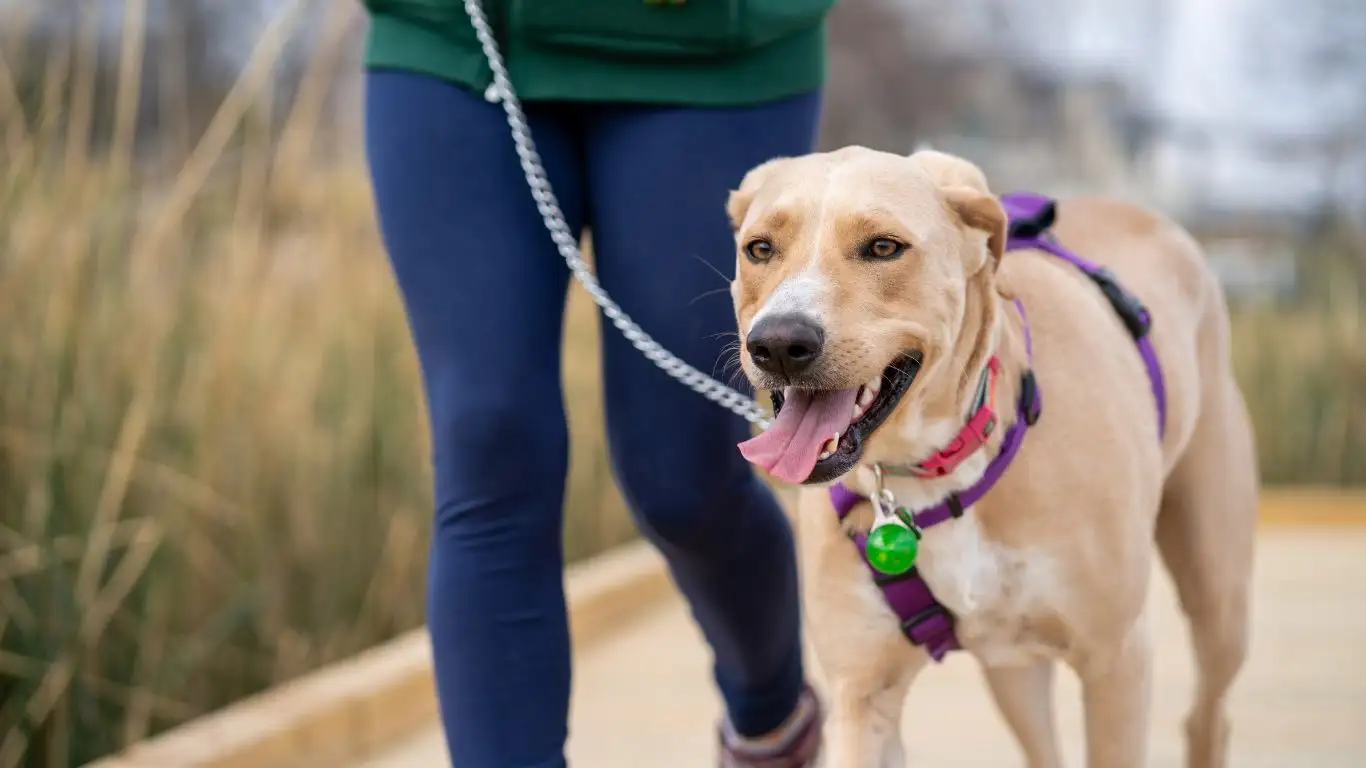
Positive reinforcement is the golden rule in dog training. It’s one of the best tools you have in shaping your dog’s behavior—especially when it comes to reducing fear. By rewarding calm behavior with treats, praise, and play, you’re encouraging your dog to keep engaging with the vacuum cleaner without fear. Over time, they’ll come to associate the vacuum cleaner with positive experiences rather than stress.
Here are a few ways to use positive reinforcement to help your dog tolerate the vacuum cleaner:
- Reward calm behavior: The moment your dog stays calm while the vacuum is in the room, reward them with praise, treats, or a toy. The key is to catch them being calm, not just when they’re behaving well but also when they’re simply tolerating the vacuum’s presence.
- Use high-value treats: Some dogs need a little extra motivation, especially if they’re particularly fearful of the vacuum cleaner. Try using high-value treats (something your dog loves, like chicken or cheese) when you’re rewarding them for staying calm during training.
- Play after the vacuuming session: After you’ve finished vacuuming and your dog has tolerated it well, reward them with playtime. Whether it’s a fun game of fetch or a tug-of-war session, this helps your dog associate the end of the vacuuming process with something fun and positive.
Being consistent with rewards helps your dog build confidence and reinforces the idea that vacuuming isn’t something to be afraid of. And as a Canine-Assisted Therapy Trainer, I’ve seen first-hand how consistency in rewards can turn fearful dogs into confident ones in no time!
Consider Using a Desensitization Video
Some dogs are visual learners, and seeing other dogs calmly tolerate the vacuum cleaner can help them understand that there’s nothing to fear. This is where desensitization videos can come in handy. You can find videos online that feature a dog calmly interacting with a vacuum cleaner. Playing these videos for your dog can help them slowly get used to the sounds, sights, and motions of the vacuum in a controlled way.
Here’s how you can incorporate desensitization videos into your training routine:
- Play the video at a low volume: Start by playing the video at a low volume while your dog is in the room. Allow them to observe the dog in the video interacting calmly with the vacuum cleaner. Pair this experience with treats and praise for calm behavior.
- Increase volume gradually: As your dog becomes more comfortable with the video, you can slowly increase the volume of the sound. Again, make sure to reward calm behavior and take breaks if your dog shows signs of stress.
- Combine video with real vacuuming sessions: Once your dog is desensitized to the video, start combining it with real vacuuming sessions. You can play the video in the background while you vacuum, helping your dog become even more comfortable with the real-life situation.
It’s a helpful tool, but keep in mind that the real-world training still needs to be your focus. Videos are a great supplemental tool, but nothing beats the actual experience of your dog learning how to handle the vacuum in real time.
Monitor Your Dog’s Stress Levels
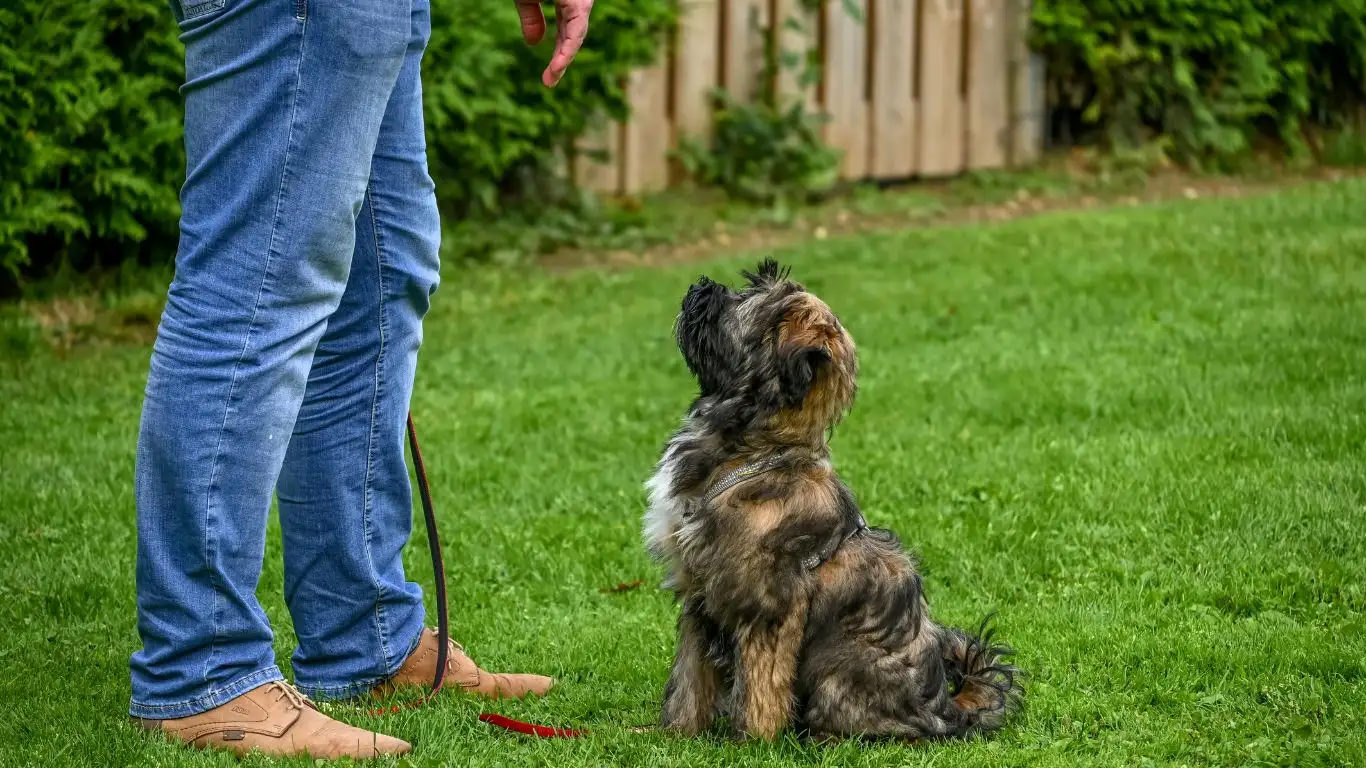
As you continue to work through the desensitization and counter-conditioning process, it’s important to pay close attention to your dog’s stress levels. Every dog is different, and what works for one dog may not work for another. Some dogs might progress quickly, while others may need more time to get comfortable with the vacuum cleaner.
If your dog starts to show signs of increased anxiety, such as panting, shaking, or trying to escape, it’s a sign that you may be pushing them too hard or too fast. In these situations, take a step back and go back to a less challenging stage of training. Give your dog some extra time to adjust before moving forward again.
As a Canine-Assisted Therapy Trainer, I always emphasize the importance of patience. Training a dog to tolerate the vacuum cleaner isn’t a race—it’s a process that should be adapted to your dog’s individual needs. Always err on the side of caution and keep your dog’s well-being as the top priority throughout training.
Handling Setbacks in Training

Training your dog to tolerate vacuum cleaners is a process that doesn’t always go in a straight line. Just like with any training, setbacks are natural and part of the journey. One day, your dog might be perfectly calm around the vacuum, and the next, they may show signs of fear or anxiety. It’s important to keep a level head during these setbacks and remind yourself (and your dog) that it’s okay to take a step back and slow things down when necessary.
When setbacks occur, it can be tempting to rush through the training in an effort to “fix” the issue quickly, but I’ve seen firsthand how much progress can be lost when you push too fast. The key is to return to the basics—perhaps even taking a few steps backward in the training process. Here are a few tips to help handle setbacks:
- Don’t rush the process: If your dog shows signs of fear or anxiety, take a step back. Return to the earlier stages of desensitization and counter-conditioning. You might need to decrease the intensity of the training for a bit to rebuild your dog’s confidence.
- Be patient: I can’t stress enough how important patience is. Not every dog learns at the same pace, and that’s okay. Some dogs need more time to adjust to new experiences, especially something as intimidating as a vacuum cleaner.
- Keep your dog’s confidence high: Every time your dog stays calm around the vacuum, make sure to reward them. Reinforce their calm behavior with plenty of praise, treats, or play. Over time, this helps them associate the vacuum with positive experiences, even after setbacks.
Remember, setbacks are a normal part of the process, and with a little extra patience, your dog will get there. The important thing is that you and your dog are working together and making steady progress!
Managing Ongoing Vacuuming Sessions
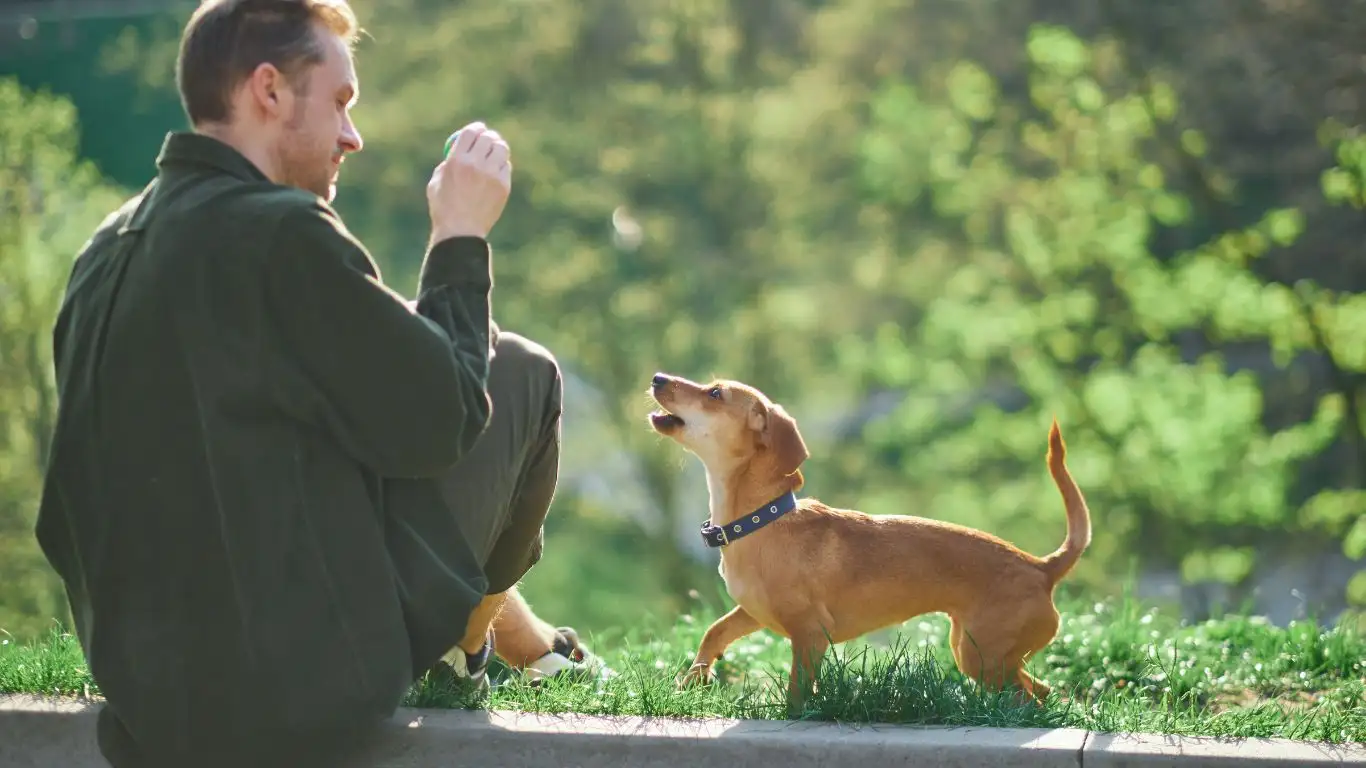
Once your dog has successfully learned to tolerate the vacuum cleaner, it’s time to think about maintaining that progress during regular vacuuming sessions. You’ve put in the work to desensitize and counter-condition your dog to the vacuum cleaner, but as with any training, it’s crucial to keep the routine consistent to prevent any regression.
Here are some tips for managing ongoing vacuuming sessions:
- Keep vacuuming sessions predictable: Dogs thrive on routine. Try to vacuum around the same time each day or week, so your dog knows what to expect. This predictability helps them stay calm and confident during vacuuming sessions.
- Stay positive and calm: Your dog looks to you for cues on how to react. If you stay calm and composed while vacuuming, your dog is more likely to remain calm as well. Even if you’re having a bad day, try to keep a positive attitude—your dog will pick up on it!
- Use the vacuum for training play: Now that your dog is more comfortable with the vacuum, you can integrate it into games to reinforce their tolerance. For example, after a vacuuming session, you can reward your dog with a “find the treat” game where treats are placed near the vacuum (while it’s off) and they get to hunt for them. This turns the vacuum into a fun, interactive tool rather than a source of stress.
With continued positive reinforcement and consistency, your dog will likely begin to ignore the vacuum cleaner altogether, allowing you to clean without interruption. While it might take time for your dog to fully ignore it, the key is to maintain the habits you’ve built during training. The more routine and consistent you make it, the easier it will be for your dog to remain calm.
Important Considerations for Special Cases
Every dog is different, and some may have unique needs when it comes to training with vacuums. Some dogs, particularly those with severe noise sensitivities or previous traumatic experiences with vacuums, may require a different approach or additional steps to become comfortable. Here are a few special considerations for dogs that may need extra help:
- Dogs with extreme noise sensitivity: If your dog is exceptionally sensitive to loud noises, you may need to take additional precautions. Using noise-canceling headphones or playing calming music during vacuuming can help reduce anxiety. You may also want to work with a professional dog trainer or behaviorist who can help create a custom desensitization plan.
- Dogs with past trauma: Dogs that have had traumatic experiences with vacuums, such as being startled by a loud vacuum in the past, may take longer to adjust. In such cases, you might need to go even slower with the training and offer lots of reassurance and comfort throughout the process. For these dogs, it’s also important to avoid punishing them for fearful behavior, as it can make the problem worse.
If you’re unsure how to approach training your dog, consider consulting a professional trainer who specializes in fear-based behavior. A professional can offer additional insights and strategies tailored to your dog’s unique needs.
References
For further reading on dog training and behavior modification, check out these helpful resources:
Disclaimer
The information provided in this article is for educational purposes only. Training methods should always be tailored to the specific needs of your dog. If your dog shows signs of severe anxiety or fear, it’s recommended that you consult with a professional trainer or veterinarian. This article does not substitute for professional advice or medical care.
